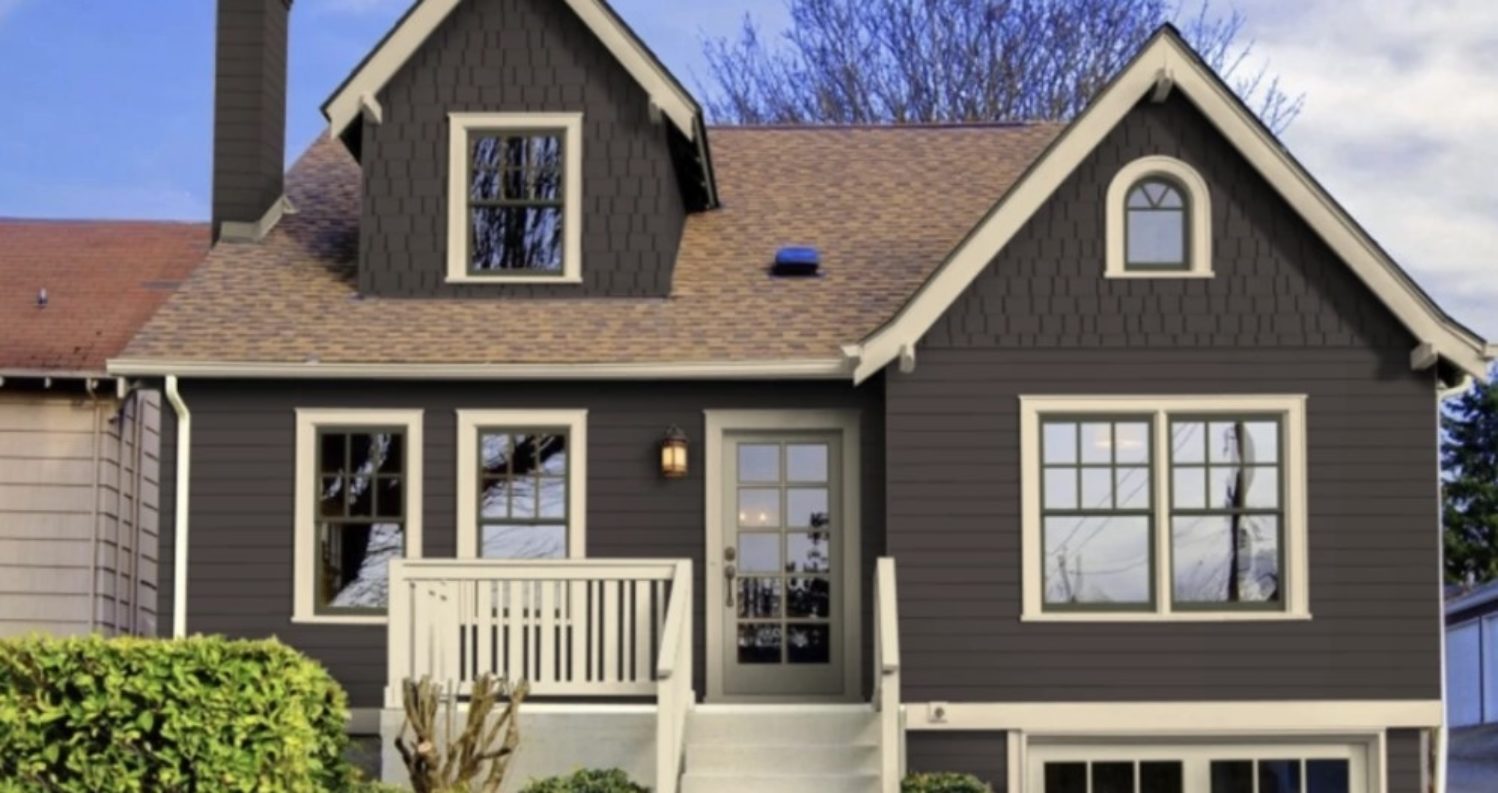Insulated siding for noise reduction offers a multifaceted approach to creating quieter living and working spaces. This innovative building material combines the aesthetic appeal of traditional siding with the sound-dampening properties of insulation, providing a practical and elegant solution for noise pollution. We will explore the various types of insulated siding available, their effectiveness in reducing noise levels, and the factors influencing their performance, ultimately guiding you toward informed decision-making for your specific needs.
From understanding the different materials used – such as vinyl, fiber cement, and foam core – to analyzing their respective noise reduction capabilities and installation methods, we will delve into the science behind how insulated siding works. We’ll examine the roles of insulation core thickness, air gaps, and overall siding design in minimizing sound transmission. Furthermore, we will consider the impact of external factors like wind and building design on the overall effectiveness of the installed siding. A cost-benefit analysis, including maintenance and lifespan considerations, will round out our comprehensive exploration.
Types of Insulated Siding for Noise Reduction
Choosing the right insulated siding can significantly impact your home’s noise reduction capabilities. Different materials offer varying levels of insulation and sound dampening properties, influencing both the effectiveness and the overall cost of your project. This section will explore the key types of insulated siding, comparing their performance and installation considerations.
Insulated Vinyl Siding
Insulated vinyl siding consists of a vinyl outer shell bonded to a foam core, typically made of polyisocyanurate (polyiso) or extruded polystyrene (XPS). The foam core provides the insulation, while the vinyl offers weather resistance and aesthetic appeal. The foam core’s density and thickness directly affect the R-value and sound dampening capabilities. Higher density foam generally provides better insulation and noise reduction. Installation involves attaching the panels directly to the existing wall sheathing using specialized fasteners. This is generally a straightforward process, often suitable for DIY projects with proper preparation.
Insulated Fiber Cement Siding
Fiber cement siding, known for its durability and fire resistance, is also available in insulated versions. These typically feature a foam core sandwiched between two layers of fiber cement. The fiber cement provides a strong, low-maintenance exterior, while the foam core contributes to both insulation and sound absorption. Installation is similar to traditional fiber cement siding, requiring careful measurement and cutting to fit the panels precisely. Professional installation is often recommended due to the weight and precision needed for a proper fit.
Insulated Foam Core Siding
This type of siding uses a thick foam core as its primary component, often with a thin, protective outer layer of vinyl, aluminum, or another material. The thick foam core provides excellent insulation and sound absorption, offering superior noise reduction compared to other options. However, the outer layer may require more maintenance depending on the material chosen. Installation usually involves attaching the panels directly to the framing, potentially requiring more structural preparation than other siding types. Due to the thickness of the foam core, it may require adjustments to existing trim and window casings.
Comparison of Insulated Siding Options
The table below summarizes the key characteristics of different insulated siding options. Note that R-values and costs can vary based on specific product features, thickness, and regional pricing. Maintenance requirements also depend on factors such as climate and the chosen outer layer material.
| Siding Type | R-Value (Approximate) | Cost (Approximate per square foot) | Maintenance Requirements |
|---|---|---|---|
| Insulated Vinyl | R-5 to R-8 | $5 – $12 | Low; occasional cleaning |
| Insulated Fiber Cement | R-6 to R-10 | $8 – $18 | Moderate; occasional cleaning and potential repainting |
| Insulated Foam Core | R-10 to R-20+ | $10 – $25+ | Low to Moderate; depends on outer layer material |
Factors Affecting Noise Reduction Effectiveness
The effectiveness of insulated siding in reducing noise is not solely dependent on the siding itself. Several interconnected factors significantly influence its performance, ranging from environmental conditions to the building’s inherent design and the quality of installation. Understanding these factors is crucial for accurately predicting noise reduction and making informed decisions about its application.
Influence of Environmental Factors and Building Design
Wind, for example, can significantly impact noise reduction. Strong winds can create turbulence and pressure fluctuations, potentially negating some of the sound-dampening effects of the insulated siding. Similarly, the building’s design plays a crucial role. Features like large windows, gaps around doors and windows, or poorly sealed joints can create pathways for sound to bypass the siding’s insulation, diminishing its effectiveness. The presence of existing insulation within the building’s walls and roof also interacts with the insulated siding. If the existing insulation is inadequate or improperly installed, the added benefit of the siding may be limited. For instance, a building with thin walls and little existing insulation will see a greater improvement in noise reduction from insulated siding than a building already well-insulated.
Impact of Installation Techniques
Proper installation is paramount for achieving optimal noise reduction. Gaps or inconsistencies in the installation can create sound bridges, allowing noise to penetrate. The type of fastening used, the sealant applied, and the overall precision of the installation all contribute to the final noise reduction performance. A poorly installed system, even with high-quality insulated siding, will perform suboptimally. Conversely, meticulous installation with attention to detail can maximize the sound-dampening capabilities of the material. For example, using appropriate sealants around windows and doors, ensuring proper overlapping of siding panels, and using consistent fastening techniques will significantly improve the system’s performance.
Situations Where Insulated Siding Might Be Insufficient
Insulated siding, while effective in reducing some noise, is not a universal solution for all noise control problems. In situations involving extremely high noise levels, such as those near busy highways or airports, the reduction offered by insulated siding alone might be insufficient. Similarly, for low-frequency noise, which is more difficult to attenuate, the effectiveness of insulated siding may be limited. Other noise control measures, such as sound barriers or specialized acoustic treatments, might be necessary in such cases. For example, a building situated next to a busy airport might require a combination of insulated siding, soundproof windows, and potentially even a berm or other sound barrier to achieve adequate noise reduction.
Case Study: Noise Level Comparison
Let’s consider two identical apartment buildings, Building A and Building B. Building A is constructed without insulated siding, while Building B uses high-quality insulated siding installed with meticulous attention to detail. Both buildings are situated in a moderately noisy urban environment. Noise level measurements taken at various points within both buildings using calibrated sound level meters, after controlling for extraneous variables like time of day and weather conditions, reveal a significant difference. Building B consistently demonstrates a reduction of approximately 5-10 decibels (dB) across various frequency ranges compared to Building A. This reduction translates to a noticeable decrease in perceived noise levels, providing occupants of Building B with a quieter living environment. This difference highlights the potential benefits of insulated siding in reducing everyday noise pollution.
Final Thoughts
Ultimately, the choice of insulated siding for noise reduction depends on a careful consideration of various factors, including budget, aesthetic preferences, and the specific noise reduction goals. By understanding the different types of insulated siding, their performance characteristics, and the influence of external factors, homeowners and builders can make informed decisions to create quieter, more comfortable environments. This comprehensive guide aims to empower you with the knowledge necessary to choose the right solution for your unique needs, contributing to a more peaceful and productive living space.

